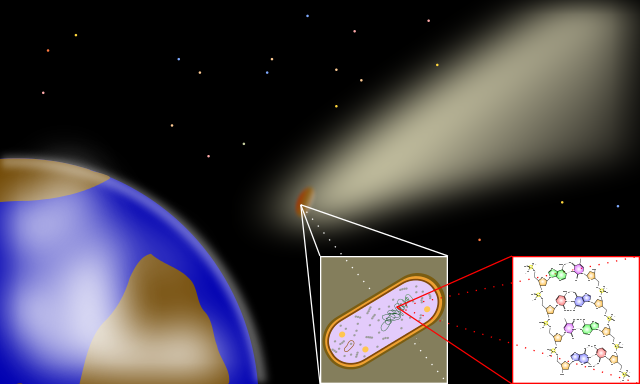Can non-intelligent life naturally evolve the ability to space travel and to live in interplanetary space?
Can non-intelligent life forms evolve to leave their home planet and travel in interplanetary space, for instance, grow on atmosphereless icy moons and transfere spores over interplanetary space?
This post was sourced from https://worldbuilding.stackexchange.com/q/28658. It is licensed under CC BY-SA 3.0.
1 answer
Yes, via panspermia.
Panspermia is the idea that extremophiles "hitch a lift", as it were, on ejecta from collisions between celestial bodies. There are a few obstacles, because the microbes would have to survive all three phases of travel:
- Launch (as well as the impact event)
- Travel in the harsh environment of space
- Atmospheric entry and landing, with high temperatures
Extremophiles are really the only types of organisms that could survive such a journey. More complicated organisms (with more needs) would surely die en route.
On Earth, here have been some discoveries of materials related to organic matter that might be evidence of panspermia; see Bell et al. (2015) for one example.

Image courtesy of Wikipedia user Beao under the Creative Commons Attribution-Share Alike 3.0 Unported license.




















0 comment threads